Acute Management of Major Thermal Burns in Adults: Presentation
VerifiedAdded on 2022/12/15
|8
|703
|344
Presentation
AI Summary
This presentation provides a comprehensive overview of the acute management of thermal burns in adults. It begins with an introduction to thermal burns, defining them as injuries caused by heat sources like steam, hot liquids, and fire, and categorizes them into first, second, and third-degree burns. The presentation's aim is to provide insights into the background, causes, assessment, and acute management of thermal burns, focusing on nursing interventions and their rationales. It details the causes of thermal burns, including fire, hot liquids, and chemicals, and outlines assessment methods such as assessing burn severity, identifying the cause, and determining the body-surface area affected. The intervention section highlights priority actions like infection control, wound care, pain management, patient comfort, and stress management techniques. The rationale for these interventions is explained, emphasizing their role in preparing tissues for grafting, minimizing pain, and reducing emotional and physical distress. The presentation references several research papers to support the information provided.
1 out of 8
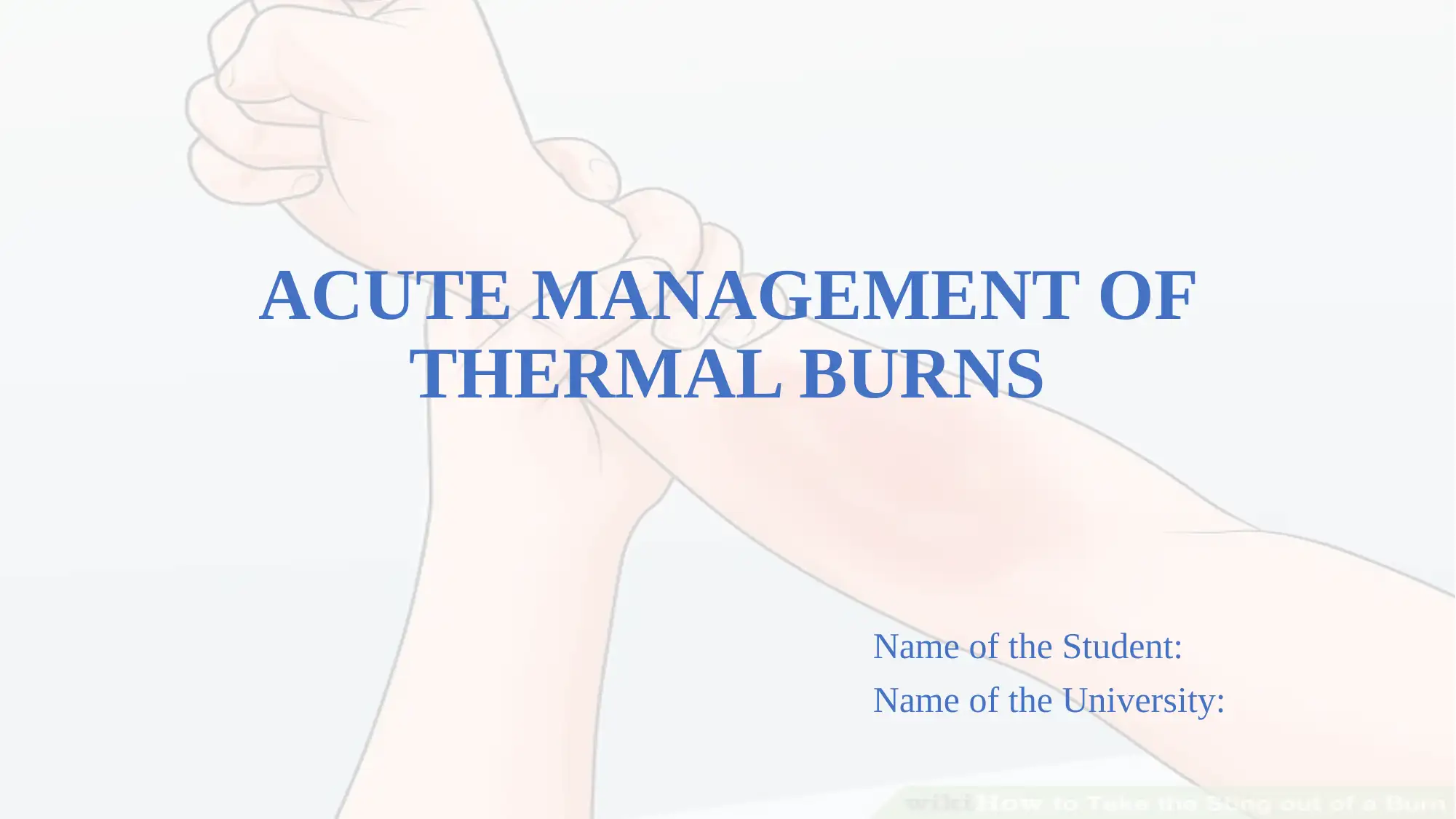
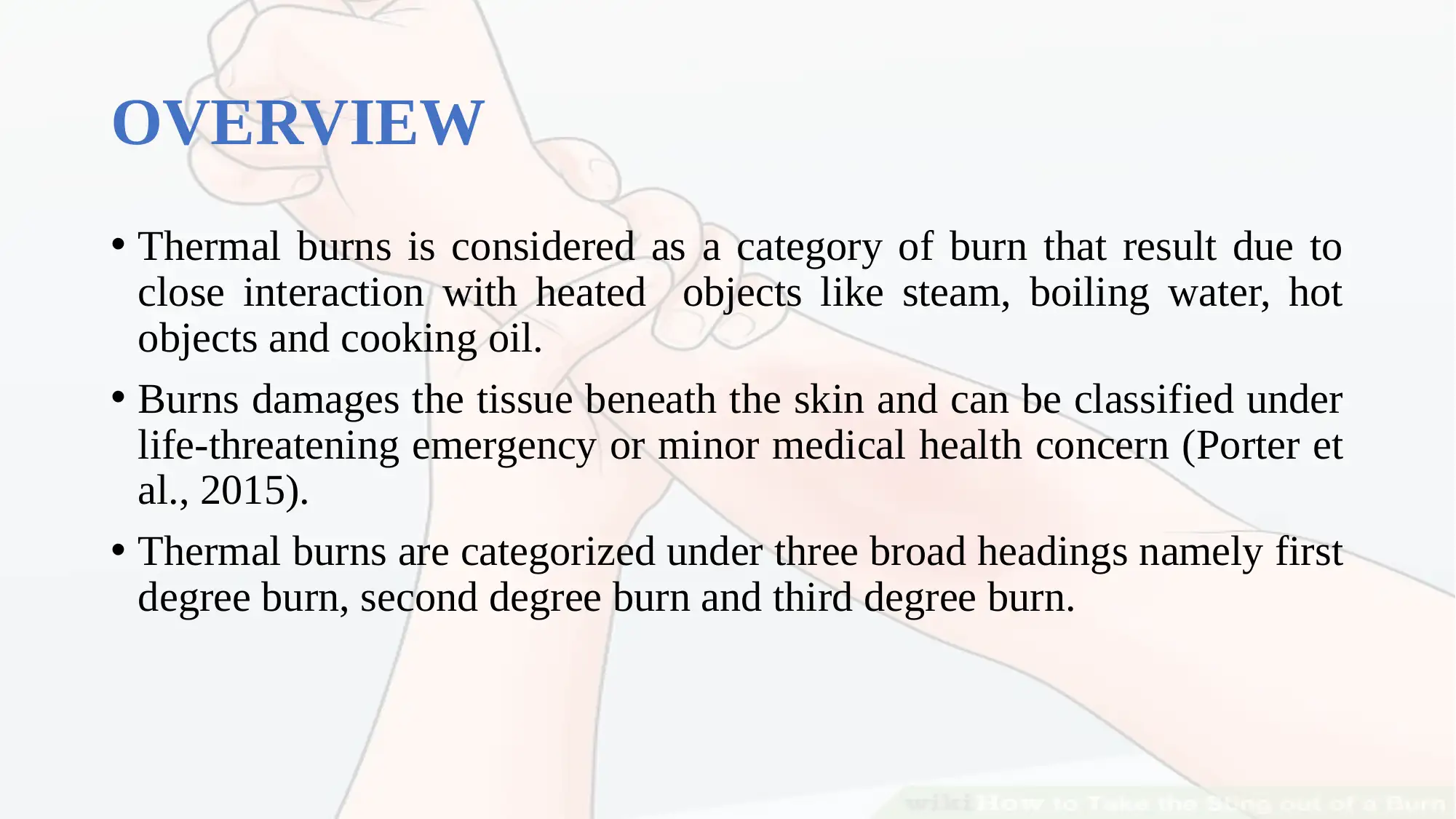
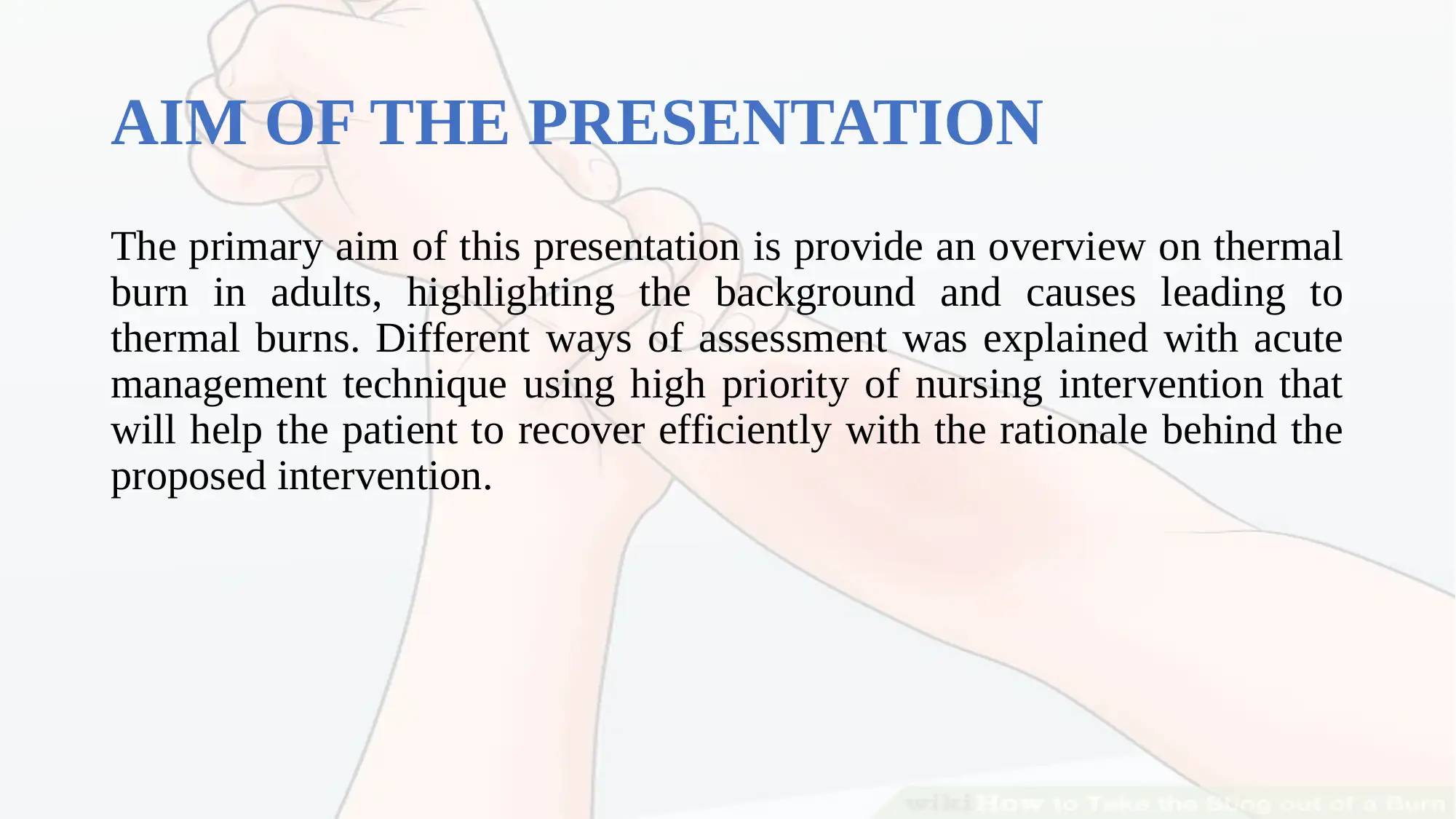

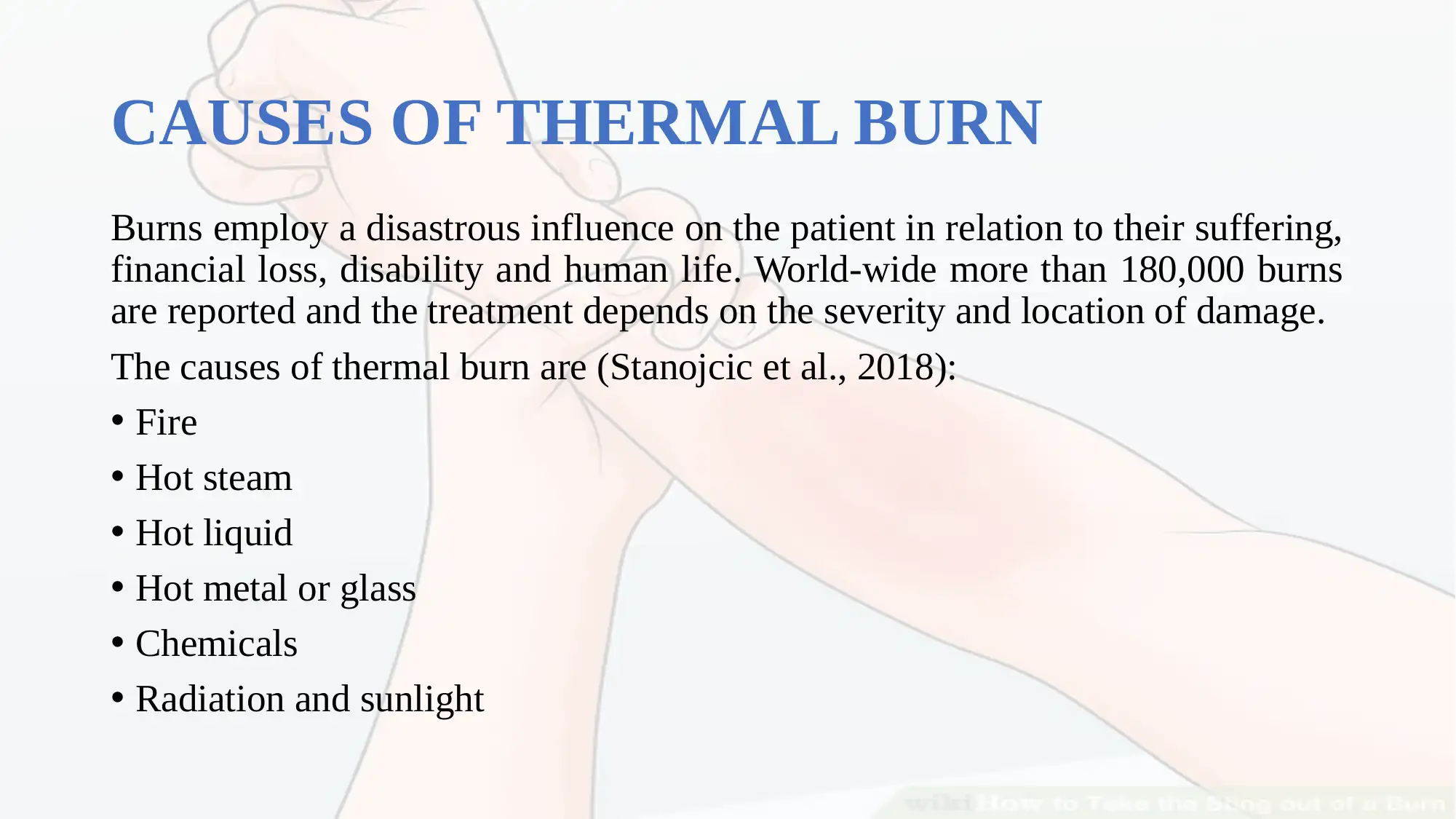
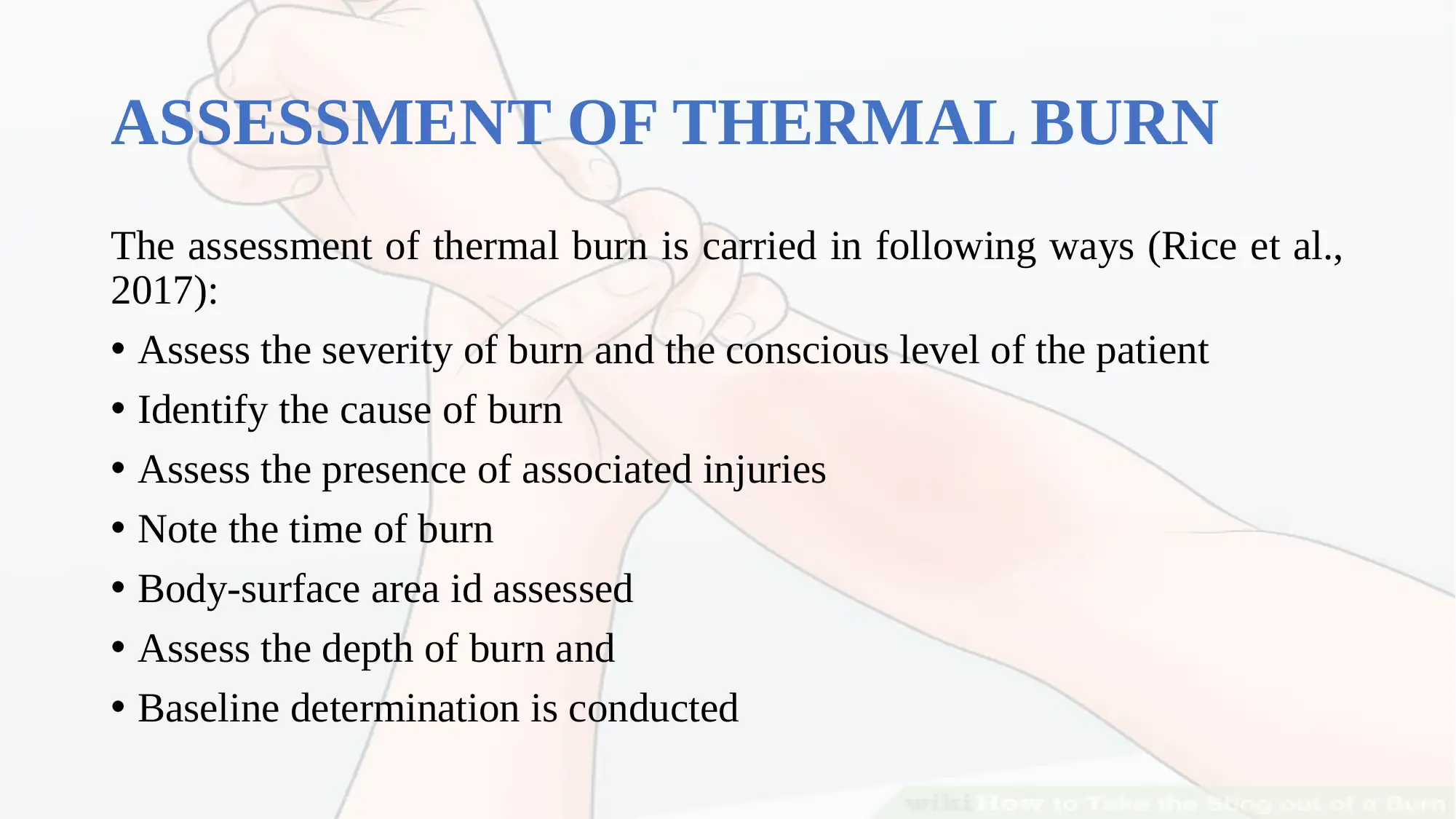
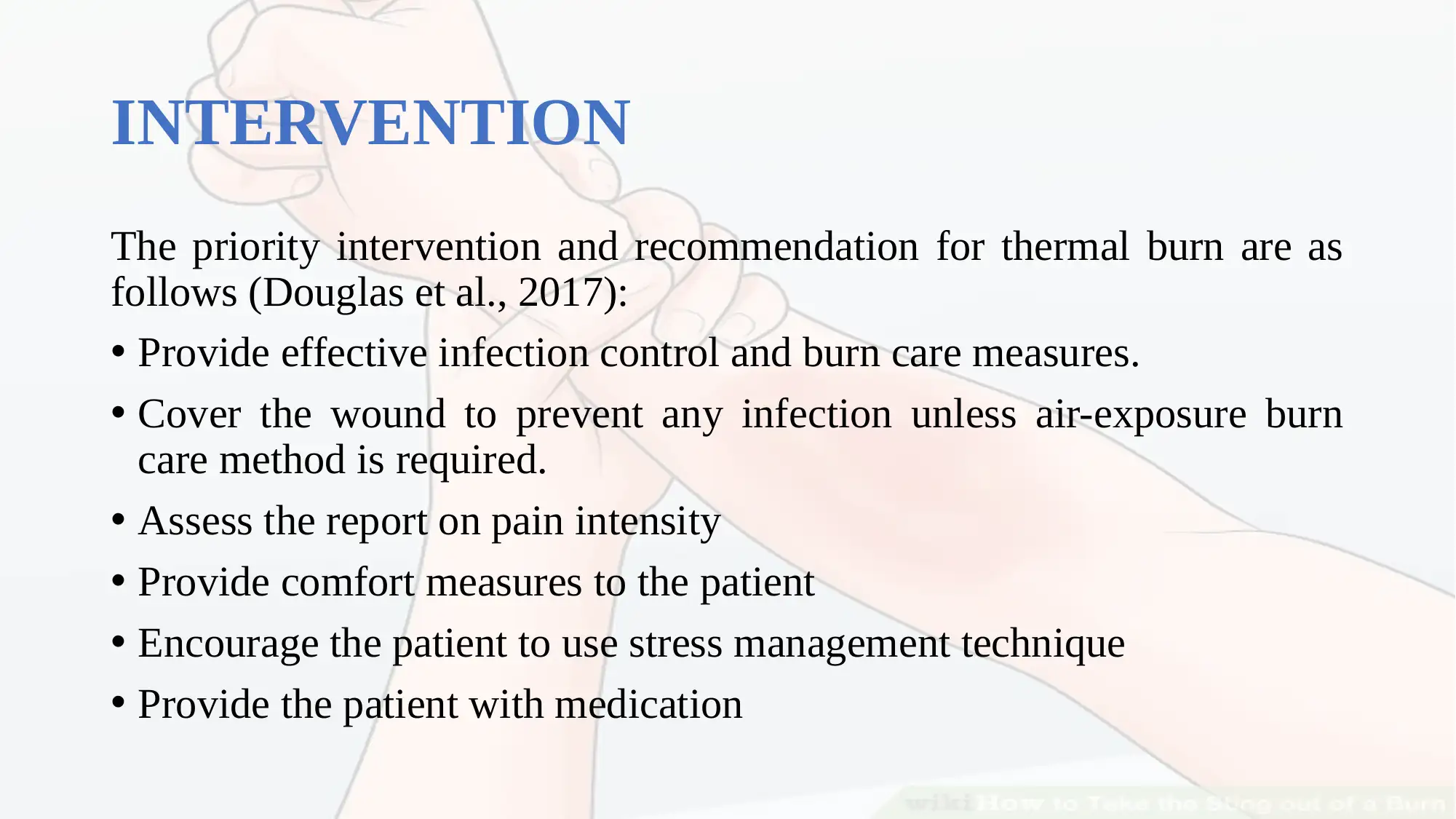








![[object Object]](/_next/static/media/star-bottom.7253800d.svg)